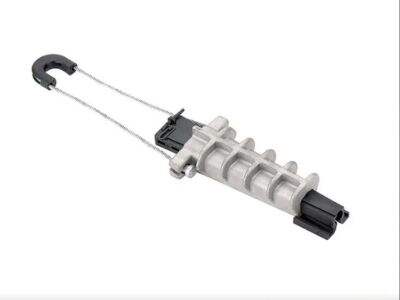you know what anchor clamps are, don't you? These three features are fantastic because they provide one more way to secure the wire that gets tightened around how to tension bar and prevent it from moving which can cause that pole to start shuttering. you get the idea…if you can visualize a large flag on a flagpole, then the wire must be tight so that they do not snag with each other. Of course, every now and then you apply the clamp too hard or too soft and shit happens. In this post, we are going to talk about a few best practices on how to install an anchor clamp correctly so that everything is safe and workable.
What you Need to Know:
Important points to consider before you start using an anchor clamp What size clamp that will fit around your wire. The anchor clamp optical fiber is Too Big or Too Small clamp_isr—size of the existed clamp too larger or smaller The next would be to check if the wire is taut, and is not snapped. you do not want to use some flimsy wire ore old one that can just break on you. 3. How Tight the Wire Should Be It should be the same as tying an overhand knot but not too tight that it hurts your feet and not too loose that it will all come undone. 4. Then make sure the clamp side of these bottle is perfectly tight and without rust. 1 and the wire would not stay tight in a crappy lock.
No Over or Under loosening :
Sometimes we get it wrong, on either end; clamping imperceptibly too hard or the opposite. If the LV ABC strain clamp is too restrictive, it can cause the wire to break or in some cases damage the pole that needs to be retained.” Like a balloon that when pressed pop? If it is too loose however then The rod may not be kept stationary in place which again can be unsafe. It can shake or topple over. So it really has to be perfect BALANCING ACT: The balancing requires of Anchor Clamps require careful handling for safe operations.
Tips for the Right Tightness:
Getting the right tightness can take some practice. But you will get it I know you can do it. Well, now, let's figure out how you can reach this balance.
Use a torque wrench. The fancier tool to test the wire tension whenever you run it. By basically, this is means it is a spectrum of tightness.
Clamp : Tight but not too tight, the clamp should have a proper grip over the wire without crushing it. It fits close enough that you kind of feel hugged, but not like anything will be cut into your body.
Listen and feel. Aside from using tools, listen to how the wire sounds and feels. But, if it sounds like a wlearning about or is literally hing — you're going to need to take that off. Trust your senses.
Eliminate over-tightening and under-tightening.
That said, here are steps that will help prevent the clamp from being tightened too much, or not enough.
Always use the right tools. They are similar to the wrong tools for the job that just make it more difficult.
Follow anchor clamp manufacturer instructions. They know the best how to use their products safely.
Routine examination of the clamp for cracks, damage or wearing. It's as easy to check a dead end strain clamp as it is the tires of your bike.
Wire not broken If it is not slide this closed before closing the clamp. Using damaged wire is risky.
Meaning you only need to apply a little bit of force when tightening the wire. Sometimes, less is more.
A Posteriori in Graduation of Proper Tension
Clamping as the way of anchoring clamps is no laughing matter. Getting the Correct Tension
Measure the tension with a torque wrench It will let you, the enough tight.
This pressure may be adjusted based on the size and strength of the wire. It is like how one balloon has a tighter fill than another but there are also times when we can not get in between to stretch the wire until it breaks and lays down.
you might also want to inquire prior to seeing what the wire and clamp have not broken. Regular monitoring helps you catch things before they go from annoying but mundane to Emergency all-hands-on-deck.
In short, anchor clamps are super tools that you use to help poles maintained in the actual do the job spot. you must learn when and how to use them. So, not to be tighten hardly or you can avoid any accidents. Again, Safety first the main point. Feman Electric always follow all these instructions under anchor clamp to maintain the safety level for you.

 EN
EN
 AR
AR
 BG
BG
 HR
HR
 CS
CS
 DA
DA
 NL
NL
 FI
FI
 FR
FR
 DE
DE
 EL
EL
 HI
HI
 IT
IT
 JA
JA
 KO
KO
 NO
NO
 PL
PL
 PT
PT
 RO
RO
 RU
RU
 ES
ES
 SV
SV
 CA
CA
 TL
TL
 IW
IW
 ID
ID
 LV
LV
 LT
LT
 SR
SR
 SK
SK
 SL
SL
 UK
UK
 VI
VI
 SQ
SQ
 ET
ET
 GL
GL
 HU
HU
 MT
MT
 TH
TH
 TR
TR


